
Crown Heights History: The Fountains at Grand Army Plaza
This series on Crown Heights History has been compiled by Instagram account @crownheightshistory, a born and raised Crown Heightser, and shows some of the ongoing research taking place.
(As a follow up to yesterday’s post, here is some interesting history about Grand Army Plaza that is mostly unknown.)
Before the Soldiers’ and Sailors’ Memorial Arch in Grand Army Plaza was built, it was the location of the Fountain of the Golden Spray of 1867. In 1873, the Dome Fountain by Calvert Vaux replaced the 1867 fountain with a two-tiered, double-domed structure of cast iron and molded sections of Beton Coignet.
The fountain featured 24 stained-glass windows lit by gas jets, and the latter boasted electric lights and dancing jets of water controlled by a subterranean operator. Additional gaslights mounted in the guardrail illuminated the surface of the pool. The fountain could pump 60,000 gallons an hour.
The 1897 Darlington Electric Fountain replaced the 1873 Dome Fountain and was controlled by 2 operators during scheduled night exhibitions on Wednesdays and Saturdays with audiences of up to 30,000. The first exhibition was held on August 7, 1897, and was attended by 100,000 people.
The automatic focusing arc lamps were wired in 3 series circuits for dimming, could each be moved 2 ft within silver parabolic reflectors to narrow or widen the 19 beams, and were positioned in concentric rings around a central light. The lights extended into glass cylinders protruding through the underwater ceiling and were each beamed through switchable disks of colored gels into water jets (there was also a lighted central geyser). An underground control room on the south of the basin allowed the lighting and hydraulics operators to view through three closely spaced windows in the basin wall 6 inches above the pool surface. A pump recirculated up to 100,000 gallons per hour from the pool in the 120-foot-diameter basin. The fountain also had 88 incandescent lamps on the inner edge of the basin’s concrete coping.
The 1915 construction of the Subway’s IRT Eastern Parkway Line (2, 3, 4, and 5 trains) and BMT Brighton Line (B and Q trains) under the plaza left no room for the required infrastructure for the Electric Fountain, which was removed and replaced with Bailey Fountain in 1932.
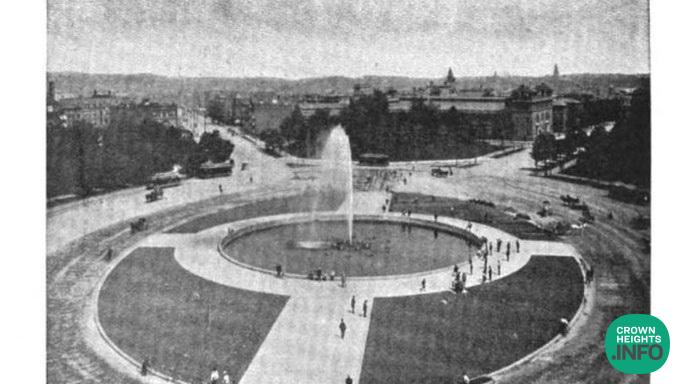
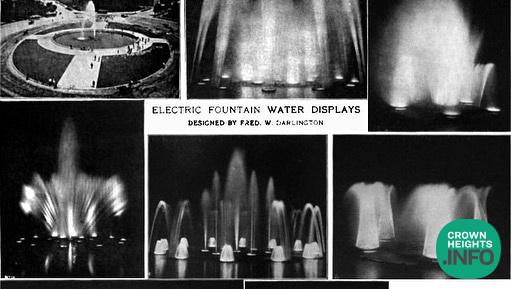

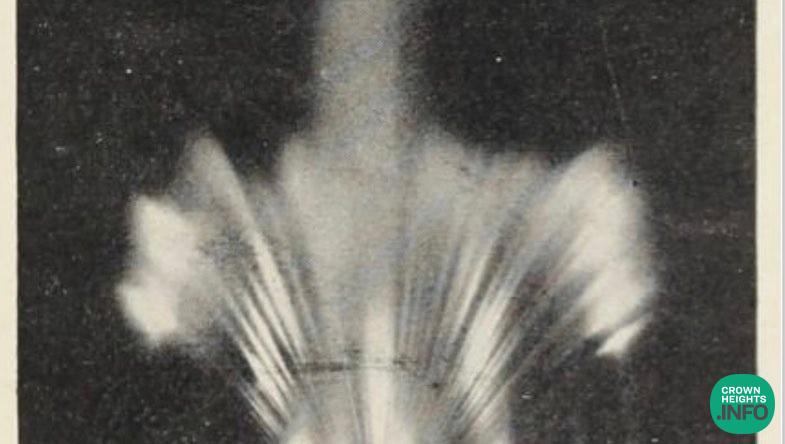
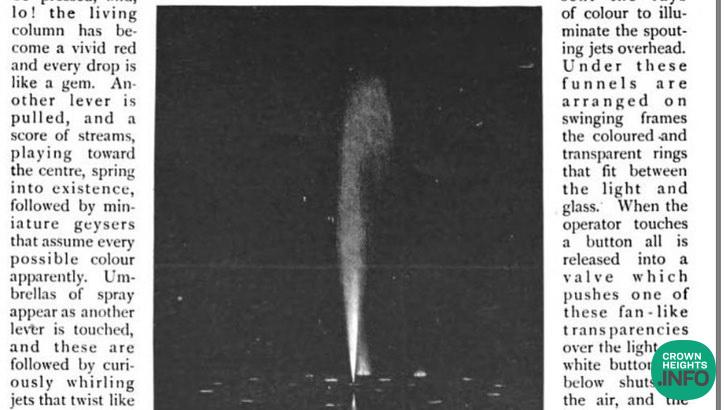
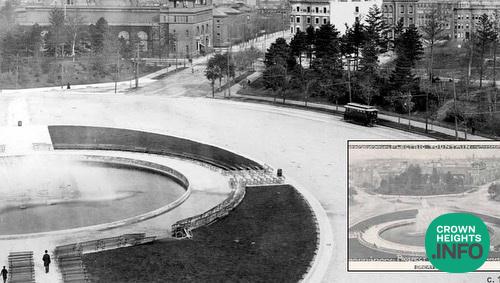














Basha Botnick
This history is so interesting. What a majestic sight those fountains must have been. Olmsted and Vaux: geniuses. The whole sweep of Grand Army Plaza and Eastern Parkway- fit for a king (the Rebbe Melech HaMoshiach).
AH
“The Fountain of the Golden Spray”? Someone didn’t think that one through… ?